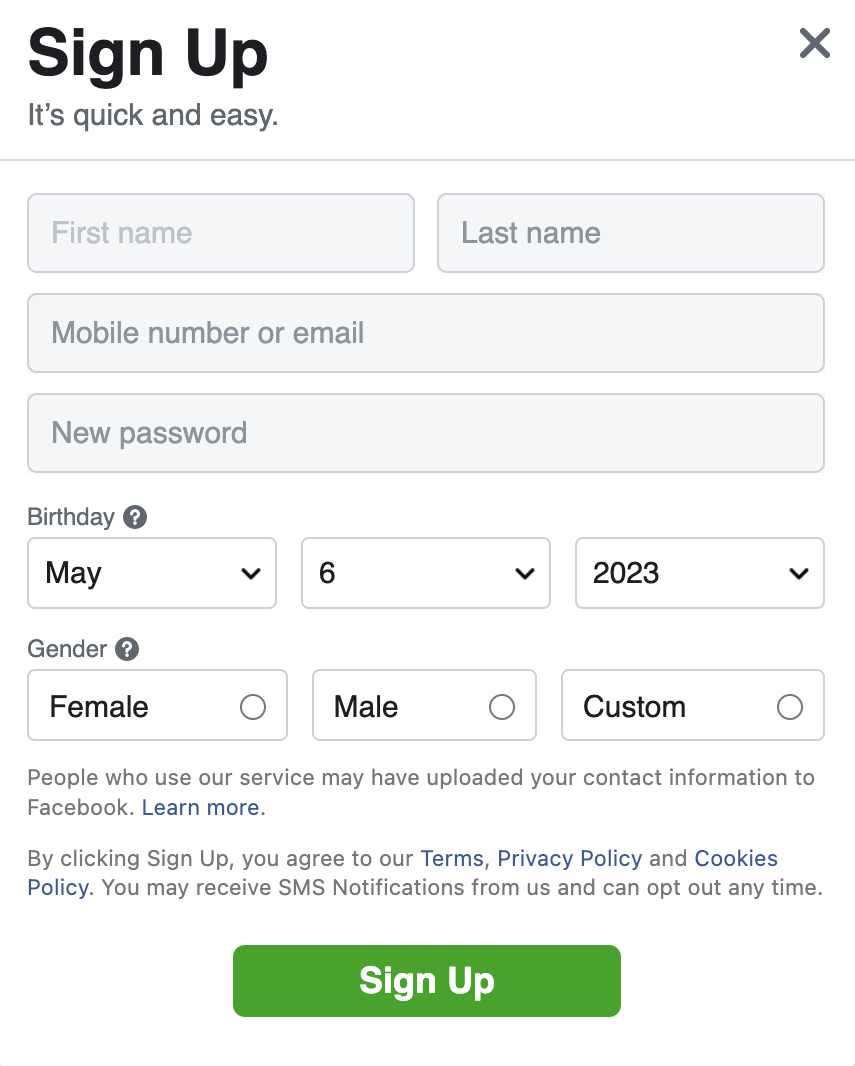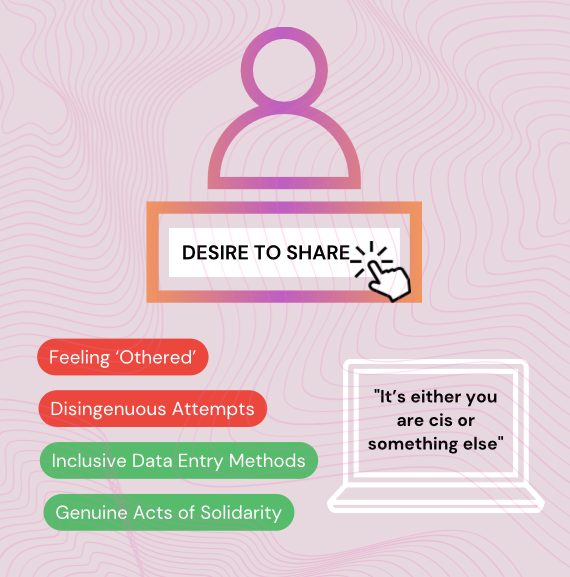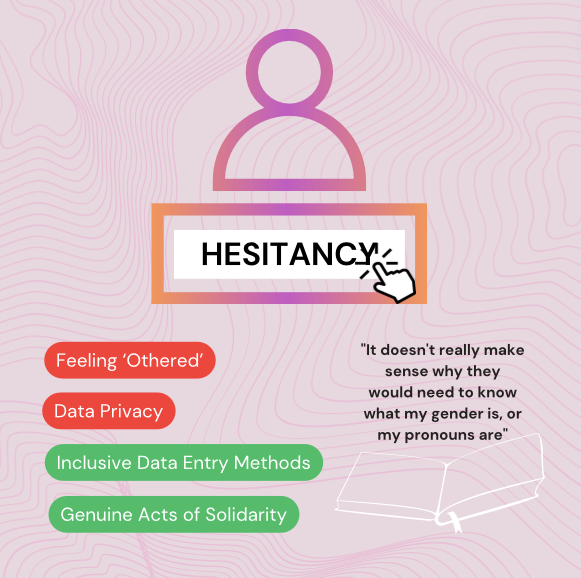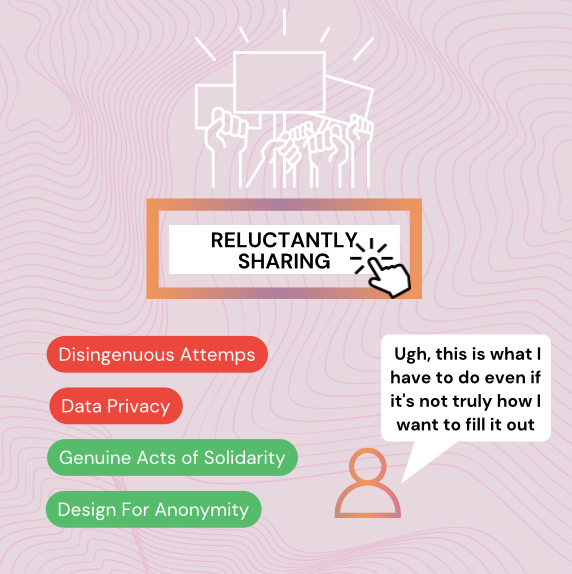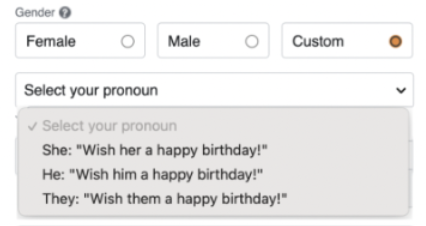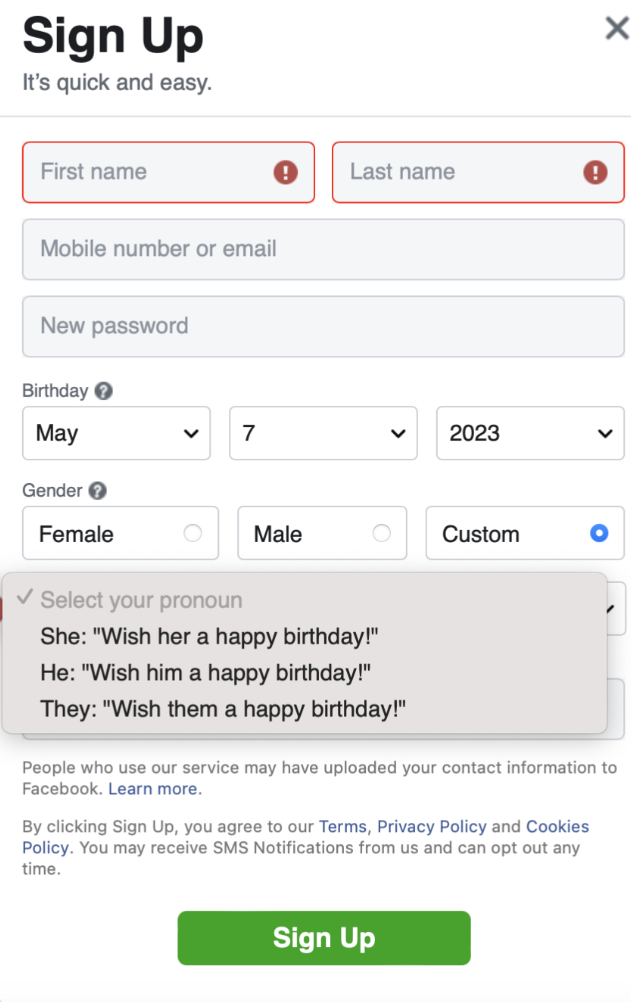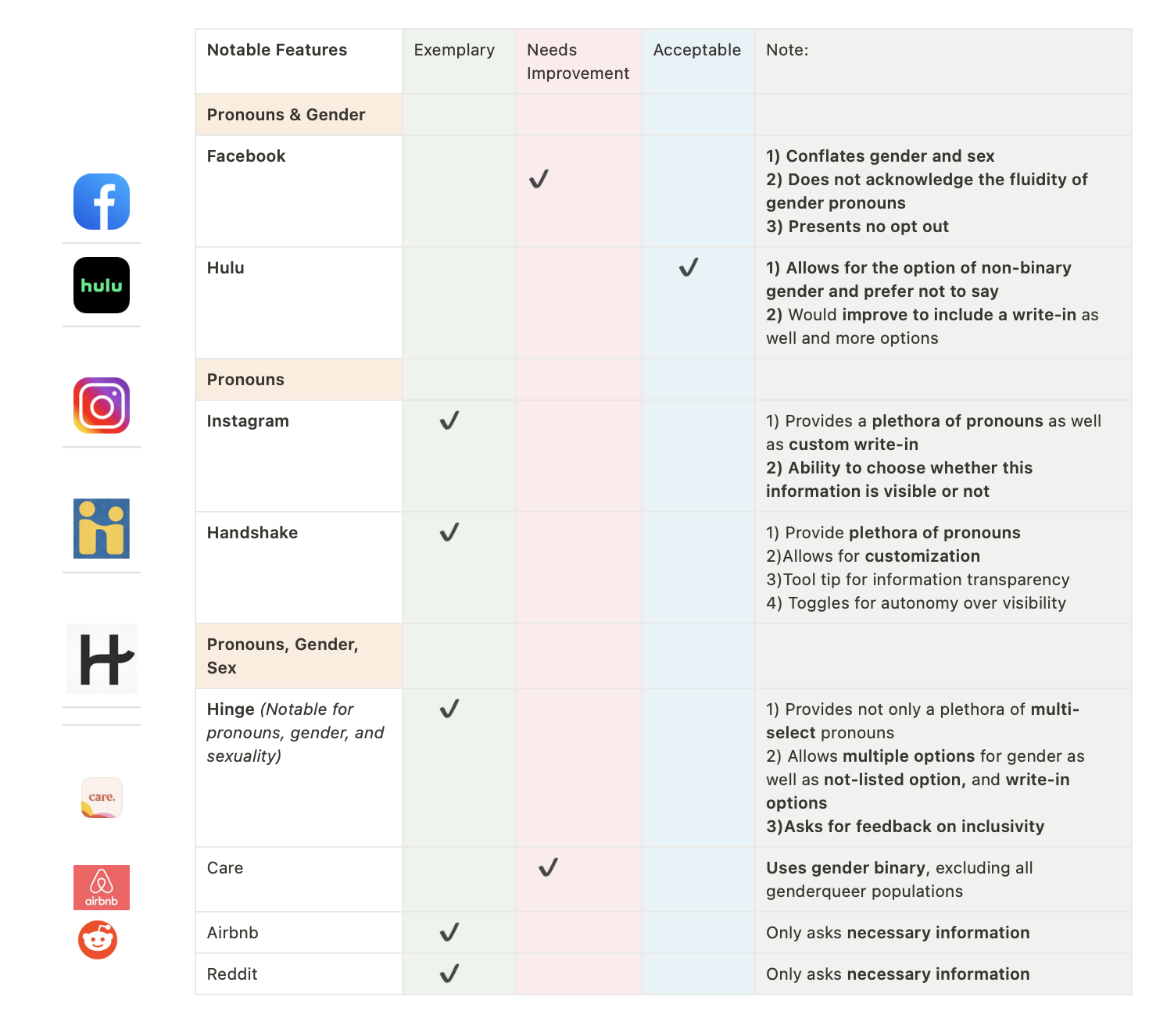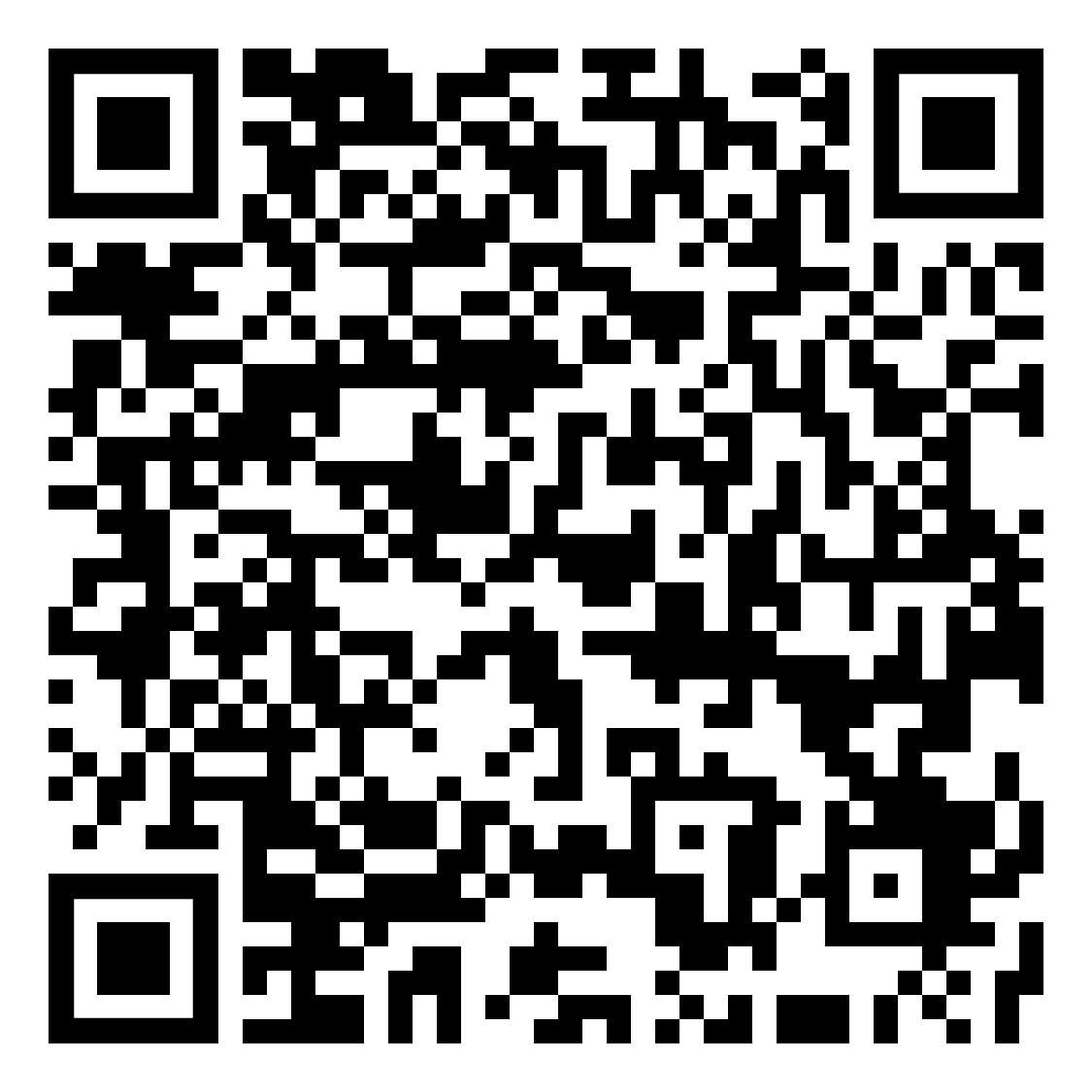LGBTQ+ Inclusive Design

User Accounts often asks that users offer normative & static options for gender, name, sex, and more, disproportionately affecting the LGBTQ+ population. This website will show user account design features that may result in LGBTQ+ misrepresentation and exclusion. The following research informed a digital playbook that aims to upskill product professionals to implement LGBTQ+ inclusive design as a forethought within product development, which you can find here.
